In the intricate world of pollination, bumblebees have evolved one of nature’s most fascinating techniques: buzz pollination. Unlike their honeybee cousins, bumblebees possess a specialized ability to vibrate their flight muscles at specific frequencies while keeping their wings still, effectively turning themselves into living tuning forks. This remarkable adaptation allows them to shake loose pollen from flowers that keep their reproductive treasures locked away in tube-like anthers. As we explore this phenomenon, we’ll discover how these fuzzy pollinators have mastered a technique that combines precision engineering with evolutionary brilliance, highlighting the incredible relationship between bees and flowering plants that has co-evolved over millions of years.
The Mechanics of Buzz Pollination

Buzz pollination, scientifically known as sonication, is a specialized foraging technique that approximately 8% of flowering plants worldwide require for effective pollination. When a bumblebee lands on a flower with poricidal anthers (anthers that release pollen through small pores), it grasps the anther with its mandibles and legs, then rapidly contracts its flight muscles without moving its wings. This action creates vibrations at frequencies ranging from 120 to 400 Hz, effectively turning the bee’s body into a vibrating instrument that shakes pollen loose from inside the flower.
What makes this technique particularly remarkable is that bumblebees adjust their vibration frequency and amplitude depending on the flower species they’re visiting. Research has shown that bees can detect which frequencies most effectively release pollen from different flowers and modify their behavior accordingly. This specialized pollination method is crucial for many economically important crops including tomatoes, blueberries, cranberries, and eggplants, which benefit little from traditional pollination methods used by honeybees.
Evolutionary Origins of Buzz Pollination

The evolutionary dance between bumblebees and flowering plants dates back approximately 100 million years. Buzz pollination represents a classic example of co-evolution, where both plant and pollinator have developed complementary adaptations over time. Plants with poricidal anthers evolved a mechanism to conserve their precious pollen, ensuring it would only be released to the most effective pollinators. This adaptation prevents pollen from being wasted on inefficient pollinators or lost to the elements.
Bumblebees, in response, evolved the specialized ability to vibrate their flight muscles at specific frequencies while keeping their wings stationary—a technique honeybees cannot perform. Fossil evidence suggests that buzz pollination may have emerged during the mid-Cretaceous period when flowering plants were diversifying rapidly. This mutualistic relationship has proven so successful that it persists across continents and climate zones, with buzz-pollinated plant families found from tropical to temperate regions.
The Unique Physiology of Bumblebees
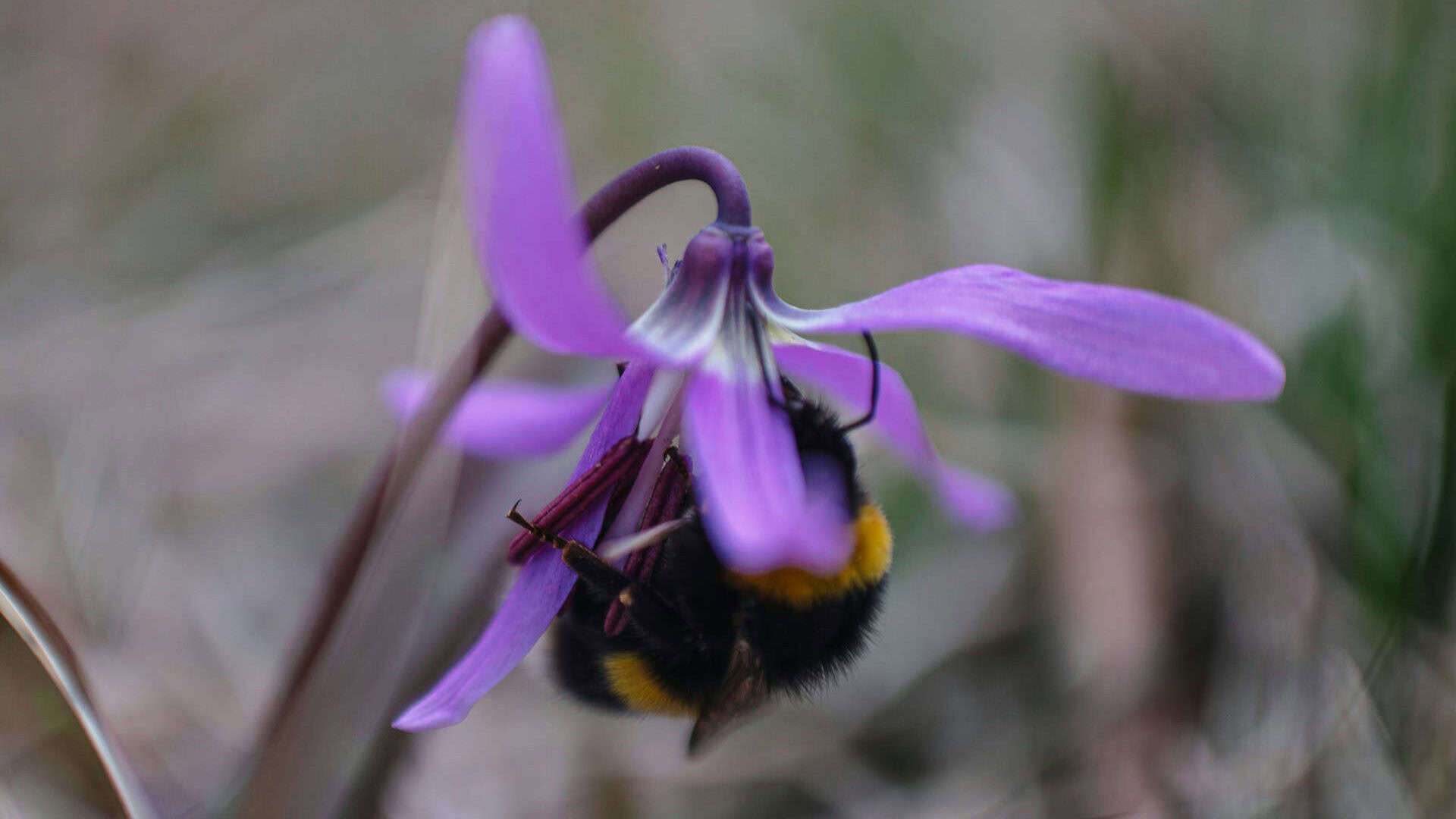
Bumblebees possess distinctive physiological features that make them ideal buzz pollinators. Their large, fuzzy bodies covered in branched hairs are perfectly designed to collect and transport pollen. These electrostatic-charged hairs allow pollen grains to adhere efficiently after being shaken loose. Additionally, bumblebees have robust flight muscles that can generate the necessary vibrations without causing damage to their own bodies. Their thoracic temperature can reach up to 30°C higher than ambient temperature during sonication, demonstrating the significant energy expenditure involved.
Unlike honeybees, bumblebees have evolved an indirect flight muscle system that allows them to decouple wing movement from muscle contractions. This adaptation is crucial for buzz pollination, as it enables them to vibrate their flight muscles rapidly while keeping their wings still. The ability to generate these targeted vibrations represents a significant evolutionary advantage, allowing bumblebees to access protein-rich pollen sources that remain unavailable to other pollinators, including honeybees, which lack this specialized capability.
The Science of Vibration Frequency
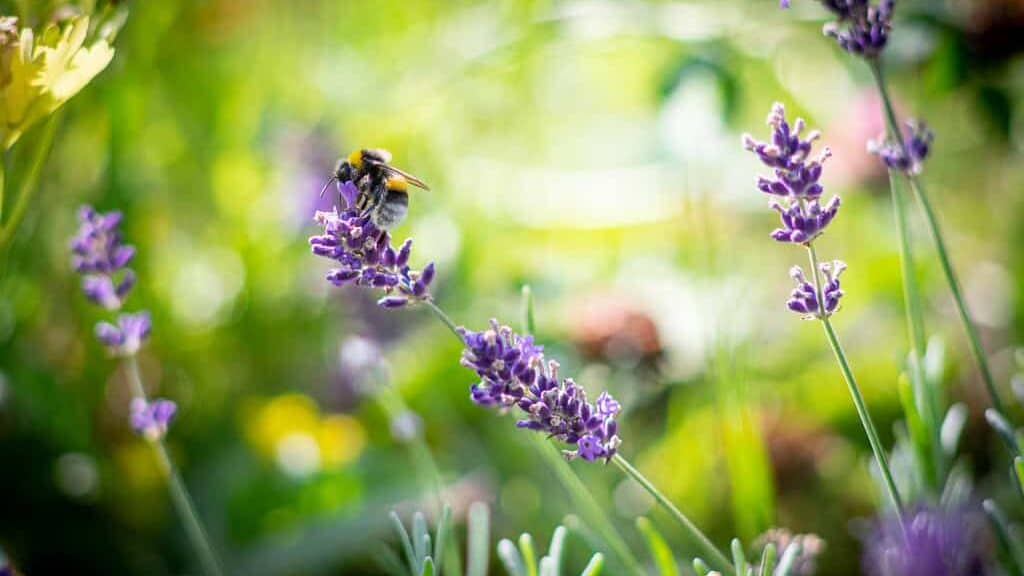
The effectiveness of buzz pollination depends largely on the precise frequency of vibrations produced by the bumblebee. Scientific studies using laser vibrometry and high-speed video have revealed that bumblebees typically vibrate at frequencies between 120 and 400 Hz during sonication. For context, this is significantly higher than the 100-120 Hz frequencies produced during normal flight. These higher frequencies are necessary to dislodge pollen grains effectively from the anthers of buzz-pollinated plants.
Research has shown that bumblebees demonstrate remarkable precision in their buzzing technique. They can adjust their vibration frequency and duration based on the flower species and even the condition of individual flowers. For example, studies have documented bumblebees increasing their vibration amplitude when visiting flowers with less available pollen, demonstrating a sophisticated adaptive behavior. The acceleration forces generated during these vibrations can reach up to 30G—equivalent to the forces experienced by fighter pilots during extreme maneuvers.
Pollen Rewards and Energy Economics
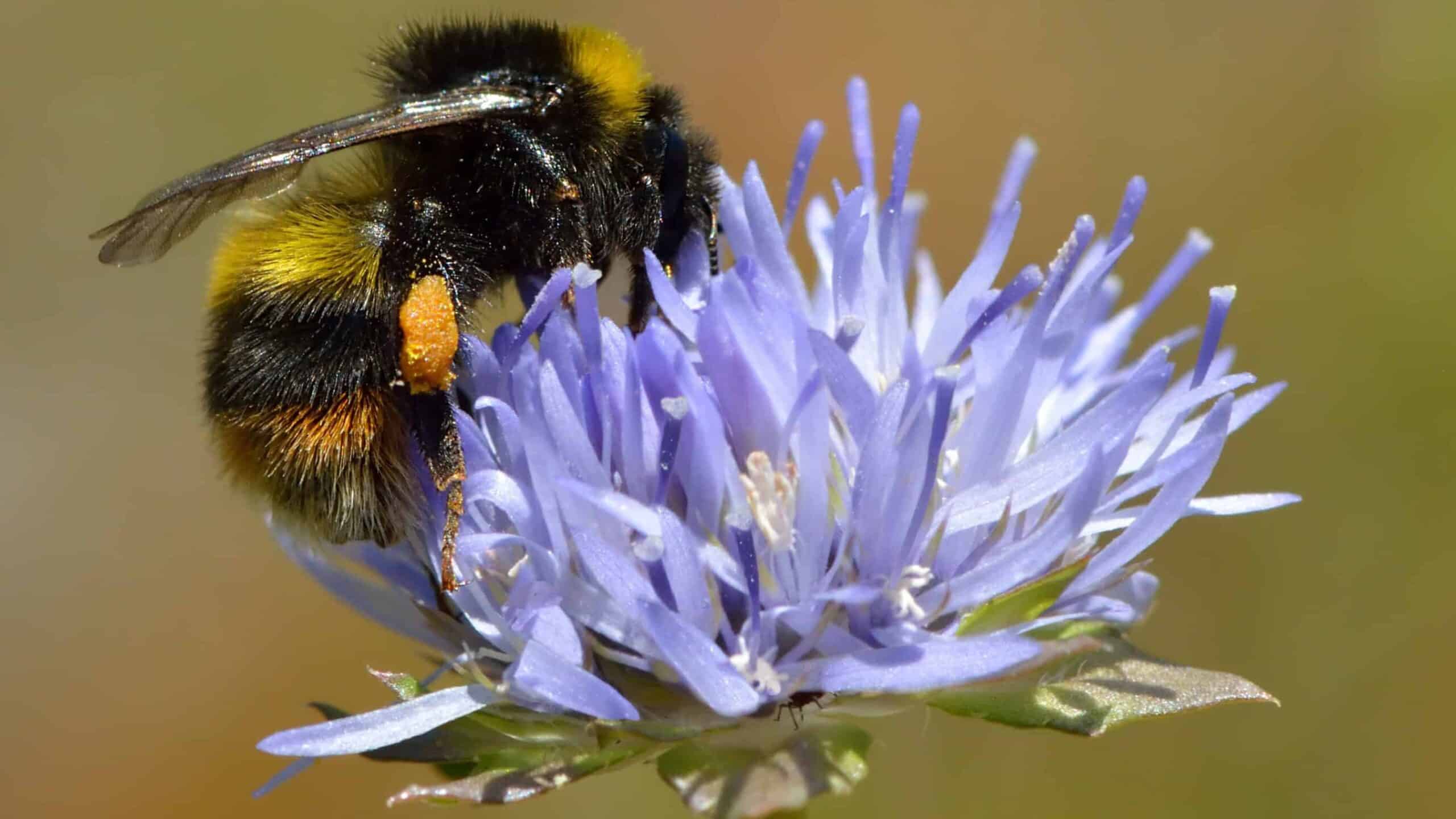
Buzz pollination represents a significant energy investment for bumblebees. The intense muscle contractions required to generate high-frequency vibrations demand substantial caloric expenditure. Studies estimate that buzz pollination can increase a bee’s metabolic rate by up to 30% compared to regular foraging. This energy cost must be balanced against the nutritional rewards gained from accessing protein-rich pollen. For bumblebees, this energetic calculation typically proves favorable, as buzz-pollinated flowers often offer higher protein content in their pollen compared to other flower types.
The nutritional quality of pollen varies significantly between plant species, with buzz-pollinated flowers generally offering superior nutritional profiles. Tomato pollen, for instance, contains approximately 35% protein by dry weight, making it an excellent nutritional resource for developing bee larvae. This nutritional advantage helps explain why bumblebees have evolved and maintained such a specialized and energetically costly pollination technique. The relationship represents a balanced energy economy where both plant and pollinator benefit—plants receive targeted pollination services while bees access premium nutritional resources.
Buzz Pollination in Agricultural Systems

The agricultural significance of buzz pollination cannot be overstated. Many commercially important crops rely on this specialized pollination mechanism, including tomatoes, peppers, blueberries, cranberries, and kiwifruit. Before the widespread use of commercial bumblebee colonies, greenhouse tomato growers had to manually vibrate flowers using electric pollinators—a labor-intensive and less effective method. The introduction of bumblebee colonies to greenhouse operations in the 1980s revolutionized tomato production, improving both yield and fruit quality.
Today, the commercial bumblebee industry represents a billion-dollar global market, with millions of colonies shipped annually to support agricultural production. Research indicates that bumblebee buzz pollination can increase tomato yields by 25-30% compared to mechanical pollination methods. As climate change and habitat loss continue to threaten wild bumblebee populations, agricultural systems that depend on buzz pollination face increasing vulnerability. This has prompted greater interest in conservation efforts and the development of more sustainable farming practices that support wild bumblebee populations.
Learning and Adaptation in Buzz Pollination
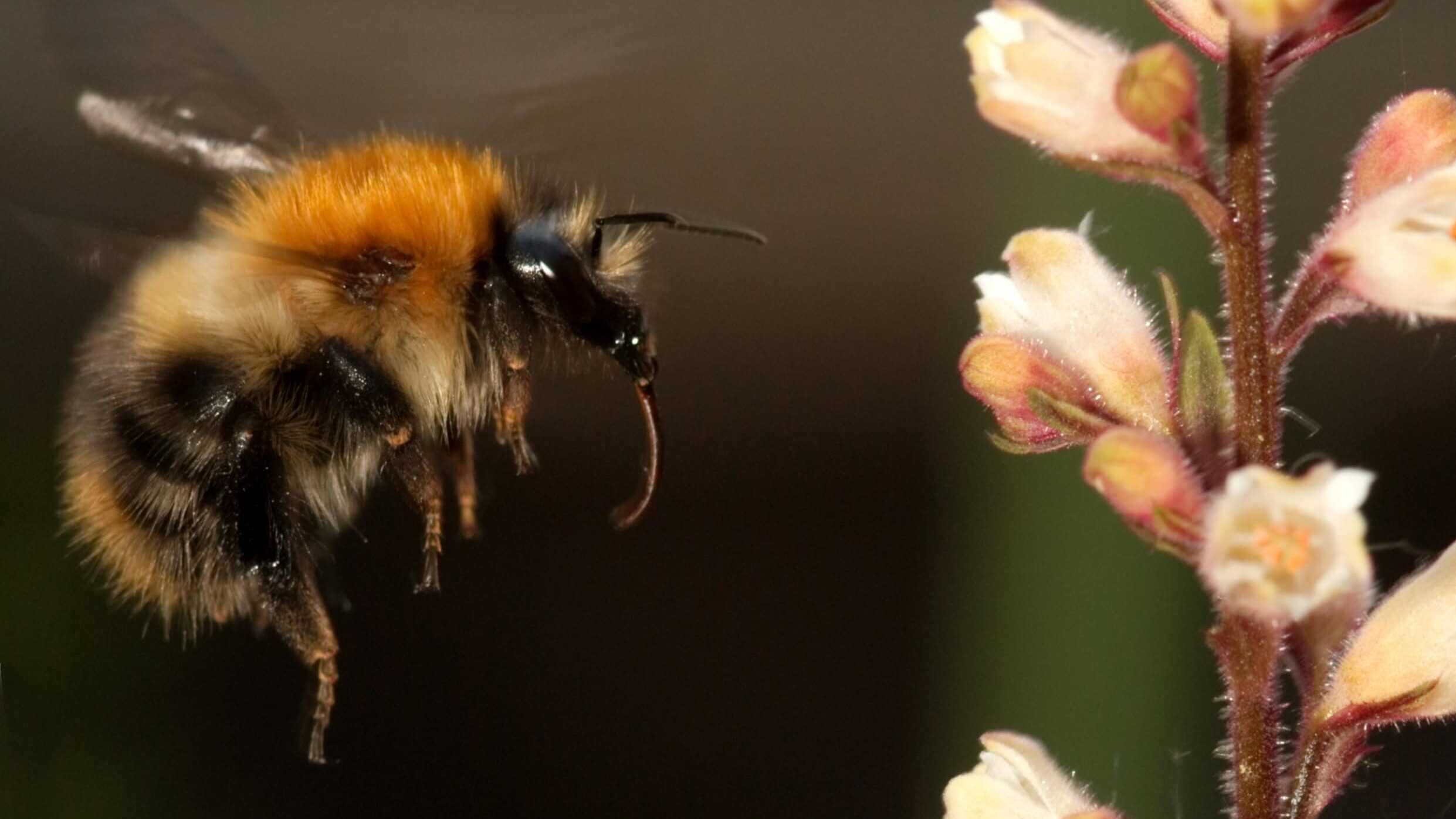
Bumblebees display remarkable cognitive abilities when it comes to buzz pollination. Rather than being born with innate knowledge of the perfect buzzing technique, bumblebees learn and refine their approach through experience. Studies have shown that novice bumblebee foragers initially perform less efficient sonication but quickly improve their technique through trial and error. They learn to recognize which flowers require buzz pollination and how to adjust their vibration parameters for maximum pollen extraction.
This learning process demonstrates the impressive neuroplasticity of the bumblebee brain, despite its relatively small size (approximately 1 cubic millimeter). Bumblebees can remember which flowers provided good pollen rewards and which required specific buzzing techniques. They can also communicate this information to nestmates through a process called social learning, where inexperienced bees observe and learn from the behavior of experienced foragers. This adaptive learning ability allows bumblebee colonies to efficiently exploit available floral resources and adapt to changing environmental conditions.
Specialized Flower Adaptations
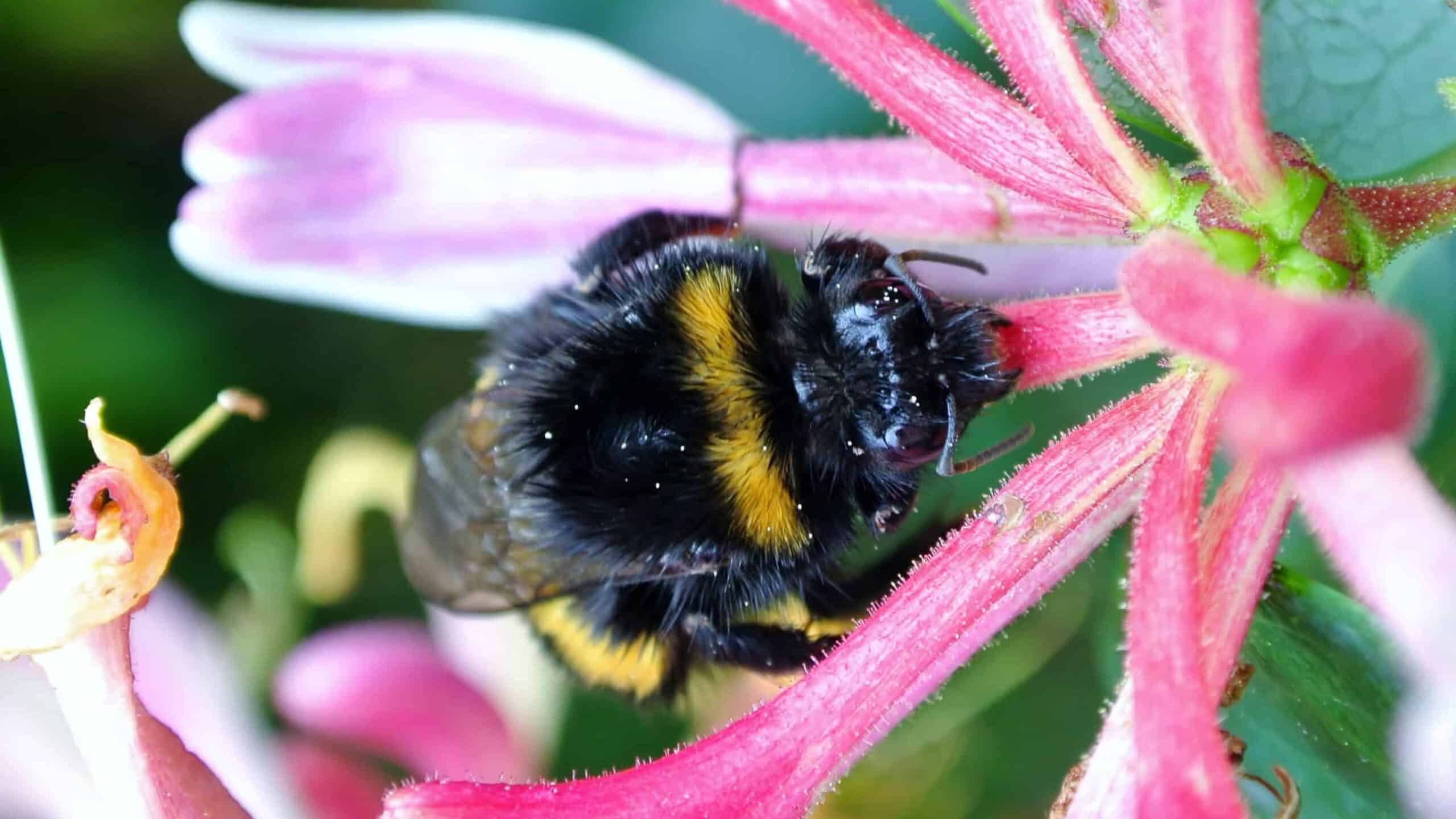
Plants that rely on buzz pollination have evolved specialized floral structures to work in concert with bumblebee vibrations. These flowers typically feature poricidal anthers—tube-like structures with small openings at the tips that function like salt shakers when vibrated. Some plant species, like those in the Solanum genus (which includes tomatoes and eggplants), have evolved anthers that resonate at specific frequencies that match the vibration frequencies naturally produced by bumblebees, creating an acoustic coupling that maximizes pollen release.
Many buzz-pollinated flowers also offer visual and tactile cues that guide bumblebees to the correct position for effective sonication. These may include distinctive coloration patterns, ultraviolet guides invisible to humans but visible to bees, or specialized landing platforms. Some flowers, such as those in the Dodecatheon genus, have evolved structural features that create a “buzz guide,” physically positioning the bee for optimal sonication. These sophisticated adaptations highlight the intricate co-evolutionary relationship between buzz-pollinated plants and their bumblebee pollinators.
Comparing Bumblebees to Other Pollinators

While bumblebees excel at buzz pollination, they are not the only insects capable of this technique. Certain solitary bee species, particularly those in the Andrena, Colletes, and Xylocopa genera, can also perform sonication. However, honeybees (Apis mellifera)—the most common managed pollinator worldwide—cannot buzz pollinate despite their importance in agriculture. This inability stems from differences in flight muscle morphology and neural control mechanisms that prevent honeybees from contracting their flight muscles while keeping their wings still.
This distinction highlights why bumblebees remain irreplaceable in certain agricultural systems. In crops like tomatoes and blueberries, bumblebees can achieve pollination rates 5-10 times higher than honeybees. Additionally, bumblebees forage under conditions that deter honeybees, including cooler temperatures, higher winds, and light rain. Bumblebees also tend to stay faithful to a single crop species during foraging trips (flower constancy), increasing pollination efficiency. These comparative advantages explain why commercial bumblebee rearing has become a significant industry despite the more established honeybee industry.
Threats to Buzz Pollination Ecosystems

Bumblebee populations face numerous threats globally, endangering the ecosystem service of buzz pollination. Habitat loss due to agricultural intensification and urban development has reduced the availability of nesting sites and floral resources. Pesticide use, particularly neonicotinoids, has demonstrated substantial negative impacts on bumblebee cognitive abilities, potentially impairing their capacity to perform the complex motor skills required for effective buzz pollination. Climate change presents additional challenges, disrupting the synchronization between bumblebee activity and flowering times.
The decline of bumblebee populations has serious implications for natural ecosystems and agriculture. A 2021 study published in Science estimated that bumblebee ranges in North America have contracted by up to 30% in recent decades. Without effective buzz pollinators, many plant species would experience reproductive failure, potentially triggering cascade effects throughout ecosystems. For agriculture, the loss of bumblebees could result in billions of dollars in reduced crop yields and quality. Conservation efforts focusing on habitat preservation, reduced pesticide use, and climate adaptation strategies are essential to protecting these irreplaceable pollinators.
Future Research Directions

The field of buzz pollination research continues to evolve with new technologies enabling deeper insights. Current research frontiers include using artificial intelligence and machine learning to analyze bumblebee vibration patterns across different plant species and environmental conditions. Biomimetic engineering is drawing inspiration from bumblebee sonication to develop more efficient mechanical pollination technologies. Genetic research is exploring the hereditary components of buzz pollination ability and how this trait might be affected by inbreeding in threatened populations.
Scientists are also investigating how climate change may affect the energetics of buzz pollination, as higher temperatures could alter the metabolic costs for bumblebees. Research into selective breeding programs aims to develop bumblebee strains with enhanced buzz pollination capabilities for agricultural applications. Additionally, interdisciplinary collaborations between entomologists, botanists, and conservation biologists are working to develop evidence-based strategies for preserving this crucial ecological relationship. These research directions highlight the continued scientific interest in understanding and protecting one of nature’s most fascinating pollination mechanisms.
The phenomenon of buzz pollination represents one of nature’s most elegant examples of co-evolution, where bumblebee and flower have developed complementary adaptations over millions of years. This specialized relationship highlights the remarkable precision that can emerge through evolutionary processes, with bumblebees capable of producing exactly the right frequency and amplitude of vibrations needed to access a flower’s precious pollen resources. As we face unprecedented global environmental challenges, preserving these intricate ecological relationships becomes increasingly vital for maintaining biodiversity and food security.
The story of how bumblebees shake loose pollen through vibration reminds us that even small organisms can develop sophisticated solutions to ecological challenges. From the specialized flight muscles that enable precise vibrations to the learning capacity that allows bees to refine their technique, buzz pollination showcases the incredible adaptability of nature. As we continue to study and understand these processes, we gain not only scientific knowledge but also a deeper appreciation for the complex and beautiful interconnections that sustain life on Earth.
- How These Tiny Fish Outsmart the Ocean’s Deadliest Predators - August 22, 2025
- Do Cats Actually Miss You When You’re Gone? - August 22, 2025
- The Science Behind Bird Migration and How You Can Help - August 22, 2025

